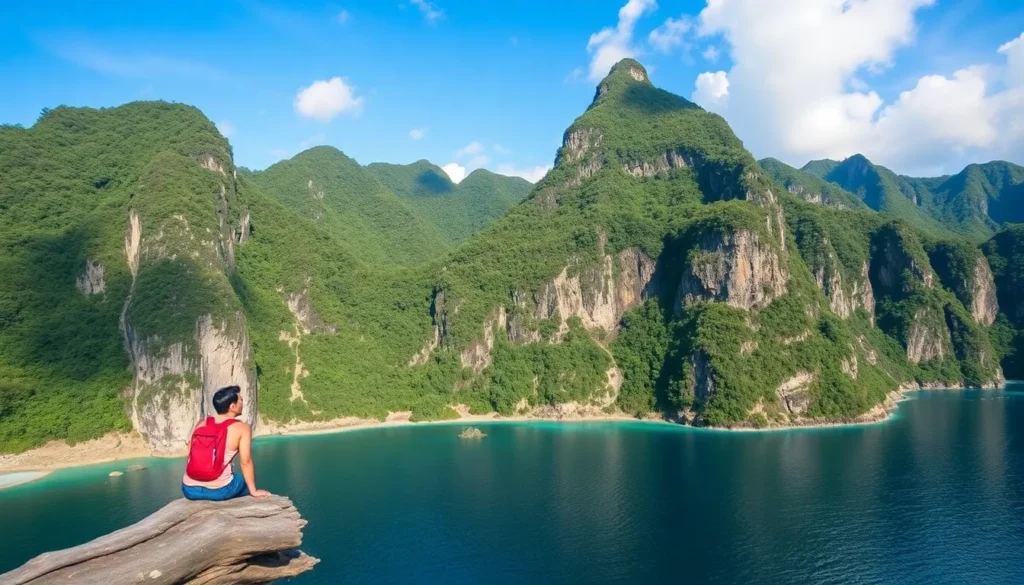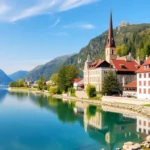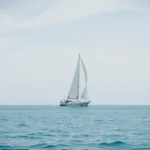Backpacking guide to the Philippines for travelers

- Understanding Visa Requirements for the Philippines
- Currency and Money Matters
- When is the Best Time to Visit?
- Health and Vaccination Recommendations
- Budgeting for Your Adventure
- Electrical Outlets and Adapters
- Crafting Your Itinerary
- Getting Around the Islands
- Must-Try Dishes and Culinary Delights
- Highlights and Challenges of Our Journey
- Additional Resources and Articles
- Our Favorite Photos from the Philippines
Have you ever dreamed of exploring a tropical paradise filled with stunning beaches, vibrant cultures, and breathtaking landscapes? If so, the Philippines might just be the destination for you! With its 7,641 islands, this Southeast Asian archipelago offers an incredible diversity that captivates every traveler. We spent 20 unforgettable days in the Philippines, immersing ourselves in its rich culture, mouthwatering cuisine, and spectacular natural beauty. From the famous beaches of Boracay to the stunning lagoons of El Nido, we discovered what makes this country so unique. Dive into our comprehensive guide tailored for backpackers and discover everything you need to know for your adventure in the Philippines, including tips for backpacking the Philippines like a pro!
Understanding Visa Requirements for the Philippines
One of the first steps in planning your trip is understanding the visa requirements. For most nationalities, entering the Philippines does not require a visa for stays of up to 30 days. All you need is a passport valid for at least six months beyond your intended stay and proof of onward travel, such as a return flight ticket. It's that straightforward—and best of all, it’s free!
If you wish to extend your stay beyond 30 days, you can apply for an extension of 29 days at any immigration office in the country. Alternatively, you can apply for a 59-day visa directly through a Philippine embassy before your departure. This way, you'll have more time to explore the stunning islands during your backpacking adventure in the Philippines!
Currency and Money Matters
The official currency of the Philippines is the Philippine Peso (PHP). Before you travel, it’s wise to familiarize yourself with the current exchange rates. Here’s a quick guide to help you manage your finances:
- Exchange Rates: Always check the latest rates to maximize your cash. Avoid exchanging money at airports where rates are often unfavorable.
- Best Payment Methods: Instead of relying on traditional banks, consider using neobanks like Revolut and N26. They offer great conditions and low fees for international transactions.
- Cash vs. Card: While cards are widely accepted in urban areas, having cash on hand is essential, especially in remote regions. Aim to carry a mix of cash and cards for flexibility.
When is the Best Time to Visit?
Timing your visit is crucial when traveling to the Philippines, as the country experiences a tropical climate with distinct wet and dry seasons. The dry season typically runs from November to April, making it the most favorable time for outdoor activities and beach lounging. However, be aware that from May to June, the rainy season begins, and thunderstorms can be frequent, especially in August.
In some regions, the weather patterns differ; for instance, southern areas may experience rain from December to March. Research the specific islands you wish to visit to ensure a pleasant experience, especially if you are planning on backpacking the Philippines!
Health and Vaccination Recommendations
While the risk of malaria in the Philippines is low, it’s wise to take precautions. The country also faces risks from dengue fever and Chikungunya, diseases transmitted by mosquitoes. Here are some essential health tips:
- Always use a high-quality mosquito repellent.
- Consider sleeping under a mosquito net, especially in rural areas.
- Avoid being outdoors during peak mosquito activity (dawn and dusk).
- Wear light, long-sleeved clothing to cover your skin.
The recommended vaccines include Hepatitis A and B, typhoid fever, tetanus, and rabies. It’s best to consult with your healthcare provider about your specific health needs before traveling.
Budgeting for Your Adventure
During our trip, we managed to keep our daily expenses around €13.37 per person, which is quite affordable! Here’s a breakdown of our expenditures:
- Acommodation: €5.82 per person, including stays in hostels and guesthouses.
- Food: €3.61 per person, enjoying local cuisine.
- Transportation: €2.81 per person, including jeepneys and ferries.
- Activities and Entrance Fees: €1.76 per person.
- Miscellaneous: €0.25 per person.
As you plan your budget, here are some reference prices to consider:
- Local meal (rice and meat): 30-50 PHP
- Double room: 500-700 PHP
- Liter of water: 30-40 PHP
- Soft drink: 30 PHP per liter
- Movie ticket: 200 PHP
- Jeepney fare: 8-12 PHP
Electrical Outlets and Adapters
When packing your bags, don't forget about the electrical outlets! The Philippines uses three types of plugs: A, B, and C, with type C being similar to European two-pin plugs. To avoid any inconvenience, consider bringing a universal adapter or purchasing a local one upon arrival.
Crafting Your Itinerary
We spent 20 days exploring various locations, including:
- Manila – the bustling capital city
- Boracay – famous for its stunning white beaches
- Iloilo – known for its vibrant local culture
- Puerto Princesa – the gateway to beautiful Palawan
- El Nido – renowned for its breathtaking lagoons and snorkeling spots
While we loved every moment of our journey, there’s so much more to see! We highly recommend checking out the blog Viajar por Filipinas, managed by our friends Jairo and Claudia, who are experts in Filipino travel and can provide invaluable insights, especially for those who are considering a Philippines backpacking adventure.
Getting Around the Islands
Traveling in the Philippines can be a bit challenging due to its geography. You’ll likely rely on internal flights to hop between islands. We found Cebu Pacific to be a reliable low-cost airline with many routes.
In addition to flights, ferries are a common mode of transportation, connecting the islands with the mainland. There are both fast and slow ferries, with the latter being more budget-friendly. For longer journeys, we took the La Milagrosa ferry from Iloilo to Puerto Princesa.
For ground transportation, the jeepney is a popular choice. These converted jeeps serve as shared taxis along defined routes. Simply hop on, pay your fare (usually quite cheap), and enjoy the ride!
Must-Try Dishes and Culinary Delights
The culinary landscape of the Philippines is a delightful fusion of Asian flavors and Spanish influences. Here are some must-try dishes:
- Lechon: A whole roasted pig, often the centerpiece of celebrations.
- Adobo: Meat marinated in vinegar, soy sauce, and garlic, often served with rice.
- Sinangag: Garlic fried rice, a staple in Filipino breakfasts.
As you explore, embrace the local cuisine, and don't forget to savor some delicious street food!
Highlights and Challenges of Our Journey
Every trip has its highs and lows. Here’s a snapshot of what we loved and what could have been better:
Highlights
- The unforgettable experience of sailing for 42 hours between islands.
- Delicious food that provided a welcome change from our usual meals.
- Exploring the historic district of Intramuros in Manila, reminiscent of Spain.
- Finally catching a movie after months of travel!
- Relaxing with a San Miguel beer while watching the sunset in Boracay.
- Incredible snorkeling experiences in El Nido.
- Trying the popular dessert, halo-halo, a refreshing treat!
Challenges
- Encountering seaweed on Boracay's famous beach.
- Facing an attempted robbery in Manila, highlighting the need for caution.
- Finding Puerto Princesa chaotic and less appealing than expected.
- Dealing with various fees for accessing airports, ports, and islands.
Additional Resources and Articles
For more insights and tips on traveling in Southeast Asia and the Philippines, check out our other articles:
- Advice for traveling in Southeast Asia
- Best time to visit Southeast Asia
- 20 must-see attractions in Southeast Asia
- Visas for Southeast Asia (for Spanish citizens)
- Southeast Asia Backpacker Guide
Our Favorite Photos from the Philippines
Don’t miss our stunning photo album showcasing the beauty of the Philippines! Check out our Facebook Album for a visual journey through our travels.
We hope our backpacker’s guide to the Philippines proves helpful as you plan your own adventure. If you have any questions or need further assistance, feel free to reach out—we're more than happy to help as you embark on your own journey of backpacking the Philippines!





Deja una respuesta